 |
Kristiansten Fort
Trondheim, Norway
|
|
 |
Constructed: 1682 - 1684
Decommissioned: 1816
Used by: Norway, Nazi Germany
Conflicts in which it participated:
Great Northern War, Second World War
|
The city of Trondheim was founded by Viking King Olaf Tryggvason (960's-1000) in 997AD, and served as Norway's capital city until 1217.
Any city built of wood will naturally burn to the ground on occasion, and Trondheim suffered this fate perhaps more than most. Through the 17th, 18th and 19th centuries Trondheim suffered at least ten major fires, many of which destroyed vast amounts of the city. The particularly destructive fire of 1681 led directly to the construction of Kristiansen Fort. |
 |
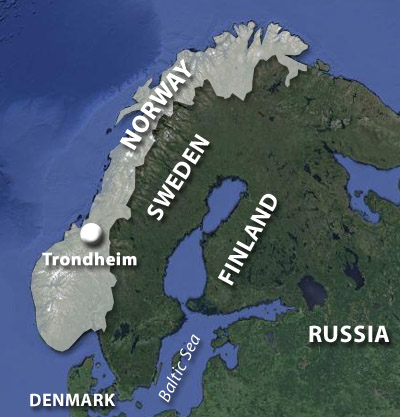 |
|
With over 90% of the city burnt to charming piles of rubble, Major General Johan Caspar von Cicignon (1625-1696) of the Danish army, Chief Inspector of Norwegian fortifications, leapt to the rescue by designing a master plan for Trondheim. Cicignon's plan included not only a broad main avenue through the city intended to act as a fire break, but Kristiansten Fort. Trondheim had traditionally depended on fortifications along the river Nidelva for its defense, but von Cicignon recognized the need for a bastion built on the heights overlooking the city, from whence mighty blows of defensive wrath could be dealt upon the heads of any cowardly invader.
|
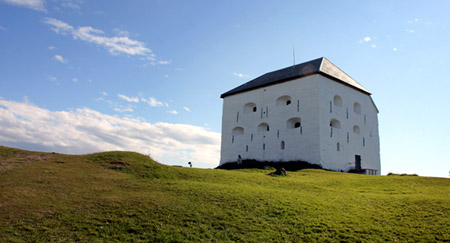 Kristiansten Fort's Donjonen, which served as the fort's citadel. Three floors, the upper two casemated for artillery, the lower used for quartering and stores. The Donjonen served as a fire watch station for the city of Trondheim after the fort was decommissioned in 1816. |
 |
The cowardly invaders came in the form of Swedes, in 1718. The Great Northern War (1700-1721) pitted most of northern Europe against Sweden, which had been the dominant power in the region for a century.
It sure looks now as though Russia bamboozled several other nations into allying against Sweden so that Russia could become the preeminent force in northern Europe...but at the time it seemed reasonable enough to those nations involved. |
|
|
Trondheim had briefly been under Swedish control in 1658, during the Second Northern War (1665-1660). The memory of Swedish rule must have been an unpleasant one, because when they showed up again in 1718 to lay siege to Trondheim, the local populace fought beside 6900 Norwegian troops to keep the city Swede-free. Kristiansten Fort was ultimately able to resist the siege, which was called when Swedish King Charles XII (1682-1718) was killed on December 11, 1718, while inspecting trenches at the siege of Frederikstad, also in Norway.
|
The Swedish troops, under Colonel Carl Gustaf Armfeldt (1666-1736), struggled through mountains in the Norwegian winter, eventually dwindling down to just a few hundred men by the time they got home. One person who did not read up on this debacle was Napoleon (1769-1821), who would go on to do much the same thing in 1812, losing around 90% of his Grand Armée on his winter retreat from Moscow.
Kristiansten Fortress was decommissioned in 1816, but a starfort is a hearty object, one that tends to stick around, active or not. This pleased the Nazis when, during the Second World War (1939-1945), they goose-stepped into many old European cities, lots of which with ready-made strongholds in the form of starforts! As was the case with many such forts, Kristiansten Fort was happily occupied by German troops from the first instant that Germans were in Norway on April 9, 1940, until the end of the war in Europe on May 8, 1945.
The Germans built a U-Boat station at Trondheim, which they named Dora.
|
 |
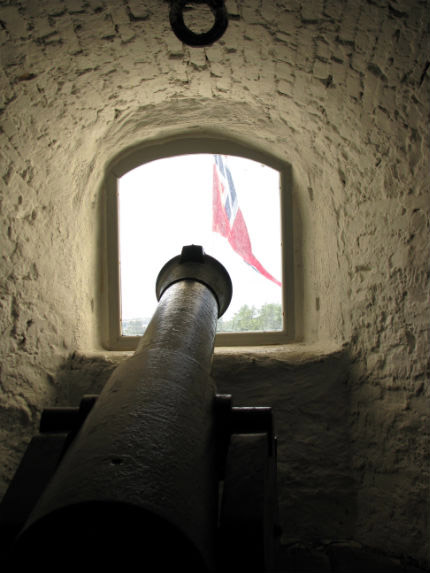 Today, Kristiansten Fort is open whenever the flag is flying. Today, Kristiansten Fort is open whenever the flag is flying. |
|
Hitler's long-term plan was to get rid of all of the pesky Norwegians and populate the city and surrounding area with healthy Aryans, and make it into a vast military base. All the Nazis ultimately wound up accomplishing while in residence at Kristiansten Fort was executing a number of Norwegian resistance folks, for whom a memorial plaque has since been installed at the fort.
If I may be bold as to backtrack in an historical sense, I would like to mention that Norway became territorially linked, in a manner that seems to have displeased Norwegians, to Sweden in the mess that followed the Napoleonic Wars (1803-1815). This was the case until November 18, 1905, when a Danish king was crowned King of Norway instead. This was seen as a vast improvement, and the flag of Norway without a representation of Sweden was raised first over Kristiansten Fort on that date, accompanied by a 21-gun salute.
Today, Kristiansten Fort's gates are open for visitors whenever the flag is flying, but the interior structures are only open for exploration from June to August.
|
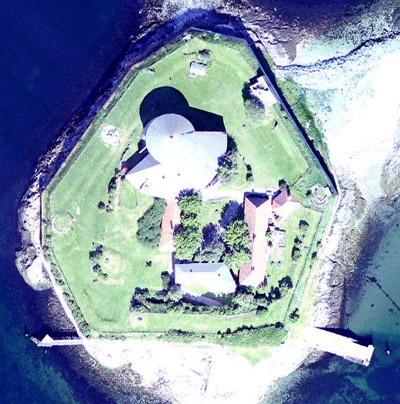 The fort at Munkholmen. |
 |
Just to the north of Trondheim, past which anyone sailing via Trondheimsfjord to the city, is the small island of Munkholmen. In the Viking era this island was used as a cool place for the local Jarls (king-type persons) to execute their executable enemies. The severed heads of bigshot enemies were mounted on the island, facing out into the fjord, as a warning to visitors, some of whom were made to spit upon those heads as a tribute to King Olav I.
A monastary, Nidarholm Abbey, was built on Munkholmen in the early 12th century. Benedictine monks did their monkey things there for a few centuries, but in 1658 the threats posed by Sweden in the Second Northern War illustrated the strategic awesomeness of Munkholmen, and a fort was begun on the island. |
|
|
Too late! Sweden took Trondheim shortly after the fort was started, and it wasn't finished until 1661, after the war was over.
|
Once the fort was completed on this relatively desolate island, the powers that be realized what a great prison this would make, what with its unpleasantness and all. Fallen nobles were most notably imprisoned on Mukholmen, one of whom, Chancellor of the Realm Peder Schumacher Griffenfeld (1635-1699), was allegedly the inspiration of an equally alleged story written by French author Victor Hugo (1802-1885). The Prisoner of Munkholmen, which I can't seem to find listed amongst Hugo's works, is included here because it sure sounds cool, whether it actually exists or not.
Prisoners of varying stripes were kept at Munkholmen until the fort was closed in 1893.
|
 |
|
|
The Nazis built the island up as an antiaircraft bastion in 1940, as an outer defense for Dora, their Trondheim submarine base.
|
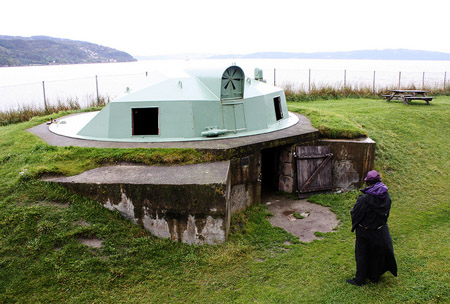 A leftover German antiaircraft battery on Munkholmen. And a person. A leftover German antiaircraft battery on Munkholmen. And a person. |
 |
Today, Munkholmen is open for visits from May 20 through September 3rd. Boats out of Trondheim take visitors to the island several times a day: Visit Munkholmen's popular restaurant! See a plaque stating that Peder Schumacher Griffinfeld paced for 18 straight years in his cell, wearing a track into the stone floor which is no longer there! Look over the water at Trondheim and wonder when the boat will take you back! |
|
|
|
|
|
|
|
 |




